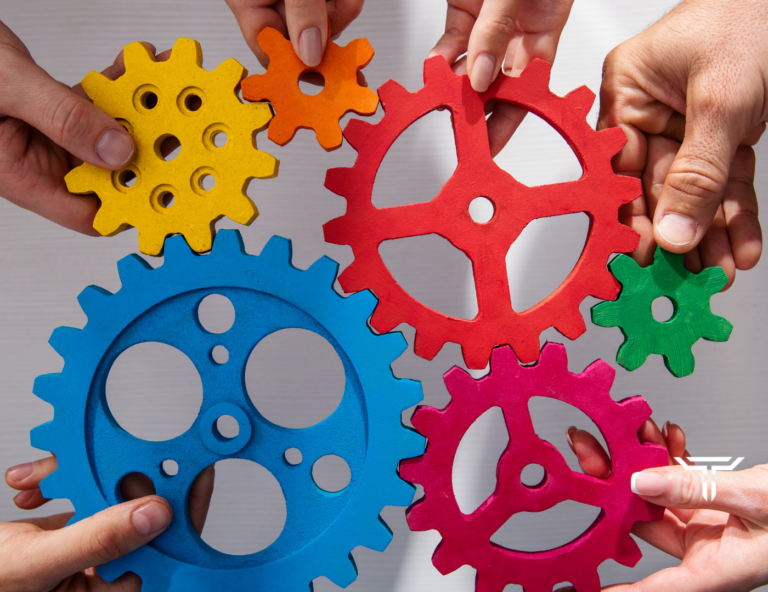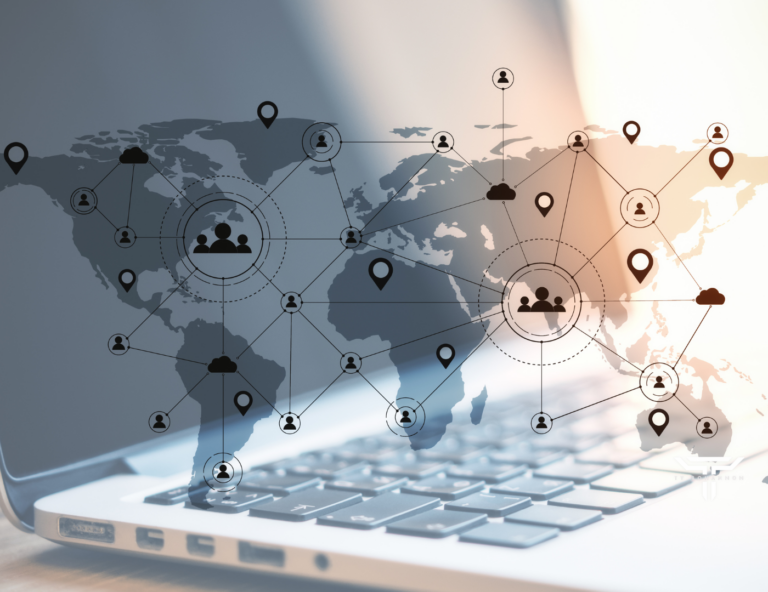Strategic Steps to Implement Effective Asynchronous Collaboration in Your Team
In today’s fast-paced and digitally interconnected world, the traditional boundaries of workspaces are dissolving, paving the way for a more flexible and dynamic approach to collaboration.
Asynchronous collaboration, the secret sauce of many successful teams, isn’t just about working at different times – it’s about reimagining how we work together. It’s a dance of digital harmony where technology meets human ingenuity.
This article isn’t just a guide; it’s your navigator in the exciting journey of transforming your team’s collaboration dynamics, ensuring everyone contributes their best, irrespective of time zones or locations.
Embracing digital transformation in team dynamics is like stepping into a new realm of possibilities. It’s about breaking free from the 9-to-5 mindset and opening up to a world where ideas can flow 24/7.
In this new era, digital tools are not just utilities; they are enablers of dreams and drivers of innovation. By leveraging these tools, teams can work more cohesively, share ideas more freely, and achieve goals more effectively, all while maintaining a work-life harmony that was once thought impossible.
Unleashing the Power of Asynchronous Collaboration
Asynchronous collaboration is not just a buzzword; it’s a game-changer. It’s about empowering team members to contribute their best work on their own time, fostering a culture of trust and respect for individual work styles.
This approach is a catalyst for creativity and productivity, allowing ideas to marinate and develop fully, rather than being rushed in the moment. By embracing asynchronous collaboration, we unlock the potential of every team member, creating a symphony of diverse thoughts and ideas that drive forward innovation.
Setting the Stage: Embracing a Flexible Work Culture
Embracing a flexible work culture is the first step in the journey of asynchronous collaboration. It’s about creating an environment where flexibility isn’t just allowed; it’s encouraged.
Here, the focus shifts from hours spent to outcomes achieved. This cultural shift requires a mindset change, where trust becomes the foundation and flexibility the norm.
Such a culture not only attracts top talent but also nurtures creativity and productivity, leading to a happier, more engaged, and more efficient team.
Crafting the Blueprint: Defining Clear Goals and Expectations
In the world of asynchronous collaboration, clarity is king. Crafting a clear blueprint of goals and expectations is like setting up a GPS for your team’s journey.
It involves defining clear, measurable objectives and aligning them with each team member’s strengths and schedules.
This clarity ensures everyone knows what’s expected of them and can work towards these goals in their own time, reducing confusion and enhancing productivity.
Choosing Your Tools Wisely: The Tech That Drives Asynchronous Success
Choosing the right tools for asynchronous collaboration is akin to selecting the right instruments for an orchestra – each plays a critical role in creating a harmonious melody.
In this digital age, the tools we choose – be it project management software, communication platforms, or collaborative tools – can make or break the efficiency of our teams.
It’s about finding the right blend of technology that complements our work style, enhances communication, and streamlines processes, all while being user-friendly and inclusive.
Navigating the Asynchronous Communication Labyrinth
Navigating the labyrinth of asynchronous communication requires a strategic approach. It’s about finding the perfect balance between staying connected and avoiding information overload.
This involves establishing clear communication protocols and leveraging digital tools to ensure messages are conveyed effectively and efficiently.
By mastering this art, teams can avoid common pitfalls such as miscommunication and delays, ensuring that every team member, regardless of their location or time zone, stays on the same page.
Fostering Open Communication Channels: Ensuring Everyone is Heard
Fostering open communication channels in an asynchronous environment means ensuring every voice is heard, every idea is considered, and every concern is addressed.
It’s about creating a virtual open-door policy, where team members feel comfortable and encouraged to share their thoughts and feedback at any time. This approach not only promotes a more inclusive and collaborative team culture but also leads to more innovative and well-rounded solutions.
Balancing Independence with Interdependence in Team Dynamics
Balancing independence with interdependence is crucial in asynchronous teams. It’s about empowering team members to work autonomously while ensuring they remain interconnected and aligned with the team’s goals.
This balance is achieved through a combination of clear expectations, trust, and the right mix of collaborative and individual work. Such a balance ensures that while team members have the freedom to work in their own space and time, they remain a cohesive and effective unit.
Mastering the Art of Asynchronous Project Management
Mastering the art of asynchronous project management involves rethinking traditional project management methods. It’s about adopting a more fluid and flexible approach, where progress is measured in achievements, not hours.
This involves setting up systems and processes that allow for continuous collaboration and progress tracking, enabling teams to work seamlessly across different time zones and schedules.
Implementing Agile Practices in an Asynchronous World
Implementing agile practices in an asynchronous world means adapting the principles of agility to fit a more flexible work environment.
This involves breaking down projects into smaller, manageable tasks, and using iterative processes to continuously adapt and improve.
By applying agile methodologies, asynchronous teams can remain nimble and responsive, adapting quickly to changes and ensuring that projects stay on track despite the geographical and temporal dispersion.
Measuring Progress and Success: Setting Up Effective Metrics
In the realm of asynchronous collaboration, traditional metrics of success may no longer apply. Here, progress and success are measured by the achievement of goals and the quality of outcomes, not just the hours logged.
Setting up effective metrics involves identifying key performance indicators that align with the team’s objectives and providing regular feedback and reviews.
This approach ensures that the team remains focused and motivated, driving towards success in a measurable and meaningful way.
Building a Thriving Asynchronous Team Culture
Building a thriving asynchronous team culture is about more than just implementing flexible work policies; it’s about nurturing a sense of community and belonging among team members who may never meet face-to-face.
This involves creating opportunities for connection and collaboration, celebrating achievements, and fostering an environment of mutual support and respect. By cultivating such a culture, teams can overcome the challenges of physical distance and create a strong, unified, and productive team spirit.
Cultivating Trust and Accountability Without Micromanagement
Cultivating trust and accountability in an asynchronous team requires a delicate balance. It’s about giving team members the autonomy to manage their own work, while also holding them accountable for their contributions.
This involves setting clear expectations, providing the necessary resources and support, and trusting team members to deliver their best work.
By avoiding micromanagement and fostering a culture of trust, teams can achieve greater levels of engagement, satisfaction, and productivity.
Celebrating Successes and Learning from Challenges
In asynchronous teams, celebrating successes and learning from challenges are key components of team development and morale. It’s about recognizing and appreciating the efforts and achievements of team members, no matter how big or small.
This not only boosts morale but also encourages a culture of continuous learning and improvement. By taking the time to celebrate successes and reflect on challenges, teams can build resilience, foster a sense of achievement, and maintain momentum towards their goals.
Overcoming Common Pitfalls in Asynchronous Collaboration
Overcoming common pitfalls in asynchronous collaboration involves being proactive and vigilant. Common challenges like miscommunication, out-of-sync schedules, and feelings of isolation can hamper the efficiency and morale of the team.
Addressing these challenges head-on with clear communication strategies, flexible scheduling, and regular check-ins can help in mitigating these issues.
It’s about creating a robust framework where potential pitfalls are acknowledged and strategies are in place to tackle them effectively.
Identifying and Addressing Challenges Proactively
Identifying and addressing challenges proactively is crucial in asynchronous work environments. This means being alert to signs of disengagement, miscommunication, or workflow disruptions.
Regular feedback sessions, surveys, and open forums can serve as platforms for team members to voice their concerns and for leaders to address them timely.
Proactively addressing these challenges not only smoothens the workflow but also shows the team that their concerns are valued and acted upon.
Keeping the Team Aligned and Motivated
Keeping an asynchronous team aligned and motivated requires continuous effort and strategic planning. This involves regularly revisiting and reaffirming the team’s goals and objectives, ensuring that everyone is working towards a common purpose.
Motivation can be fostered by recognizing individual contributions, providing opportunities for growth and development, and ensuring that team members feel valued and integral to the team’s success.
By maintaining alignment and motivation, teams can stay focused and driven, even when working apart.
The Future of Work: Evolving with Asynchronous Collaboration
The future of work is evolving rapidly, and asynchronous collaboration is at the forefront of this evolution. Embracing this model means being adaptable and open to continual learning and improvement.
As technology advances and global teams become more prevalent, the ability to collaborate effectively across different time zones and schedules will become increasingly important.
This evolution represents not just a shift in work practices but a transformation in the way we think about work, productivity, and team dynamics.
Staying Ahead of the Curve: Adapting to New Trends
Staying ahead of the curve in an ever-evolving work landscape means being vigilant and adaptable to new trends and technologies. It’s about being a lifelong learner, constantly exploring new tools and methodologies that can enhance asynchronous collaboration.
Embracing change and innovation is key to staying relevant and competitive in this dynamic environment. By being open to new ideas and continuously adapting, teams can not only survive but thrive in the future of work.
Leveraging Asynchronous Work for Continuous Innovation
Leveraging asynchronous work for continuous innovation involves harnessing the diverse perspectives and strengths of team members. This model allows for ideas to be developed and refined over time, leading to more creative and well-thought-out solutions.
By encouraging team members to contribute when they are at their most creative and productive, asynchronous collaboration can become a powerhouse of innovation and creativity.
The Asynchronous Advantage – A New Era of Teamwork
The asynchronous advantage marks the beginning of a new era in teamwork, one that embraces flexibility, diversity, and innovation.
This model not only enhances productivity and efficiency but also leads to a more balanced and fulfilling work life for team members. As we step into this new era, it’s clear that asynchronous collaboration is not just a temporary trend but a fundamental shift in the way teams work and succeed together.
Summing Up: Embracing the Asynchronous Way
In wrapping up this journey through the landscape of asynchronous collaboration, it’s clear that this is more than just a new way to work; it’s a transformative approach that reshapes how teams interact, innovate, and achieve.
As we stand at this exciting crossroads of digital transformation and workplace evolution, the asynchronous model emerges not just as a solution to geographical and temporal challenges, but as a beacon of a more inclusive, flexible, and productive future. It’s a testament to the power of technology when harmoniously integrated with human ingenuity.
As we embrace this asynchronous way, we’re not just adapting to a changing world; we’re actively shaping a new one where every team member can thrive, contribute, and find a harmonious balance between work and life.
This isn’t just the future of work; it’s a brighter, more dynamic present, opening doors to endless possibilities and pathways to success.
Frequently Asked Questions (FAQs)
Q: What Exactly is Asynchronous Collaboration?
A: Asynchronous collaboration is like a well-orchestrated symphony where each musician plays their part at different times, yet the end result is a harmonious masterpiece. In the workplace, it means team members collaborate and contribute at times that suit their individual schedules and time zones, leveraging technology to communicate and work on projects without needing to be online simultaneously. It’s about flexibility, efficiency, and harnessing the power of digital tools to keep the team connected and productive.
Q: How Does Asynchronous Collaboration Benefit My Team?
A: Think of asynchronous collaboration as your team’s superpower. It allows for greater flexibility, which can lead to increased productivity, creativity, and job satisfaction. Team members can work when they’re most focused and creative, leading to higher quality work. It also opens doors to global talent, as geographic location becomes less of a barrier. In short, it’s about working smarter, not harder, and making the most of our digital-first world.
Q: Can Asynchronous Collaboration Work in a Traditional Business Environment?
A: Absolutely! It’s like introducing a breath of fresh air into a traditional setting. The key is to start with a mindset shift, embracing the potential of digital tools and flexible work practices. Gradually integrating asynchronous methods, such as flexible deadlines and digital communication platforms, can revolutionize even the most traditional business environments, leading to enhanced productivity and a more dynamic workplace culture.
Q: What Tools and Technologies Are Essential for Effective Asynchronous Collaboration?
A: The right tools are the magic wands of asynchronous collaboration. Essential technologies include robust project management software, efficient communication platforms, and collaborative digital workspaces. These tools should be user-friendly and adaptable to different needs. It’s not just about having the tools; it’s about how you use them to transform your team’s collaboration into a seamless and productive experience.
Q: How Can We Measure the Success of Asynchronous Collaboration?
A: Measuring the success of asynchronous collaboration is like tracking the growth of a thriving garden. It’s about looking beyond traditional metrics like time spent and focusing on outcomes and achievements. Set clear, measurable goals and track progress regularly. Also, pay attention to team satisfaction and engagement levels – they’re key indicators of a healthy and successful asynchronous work environment.






